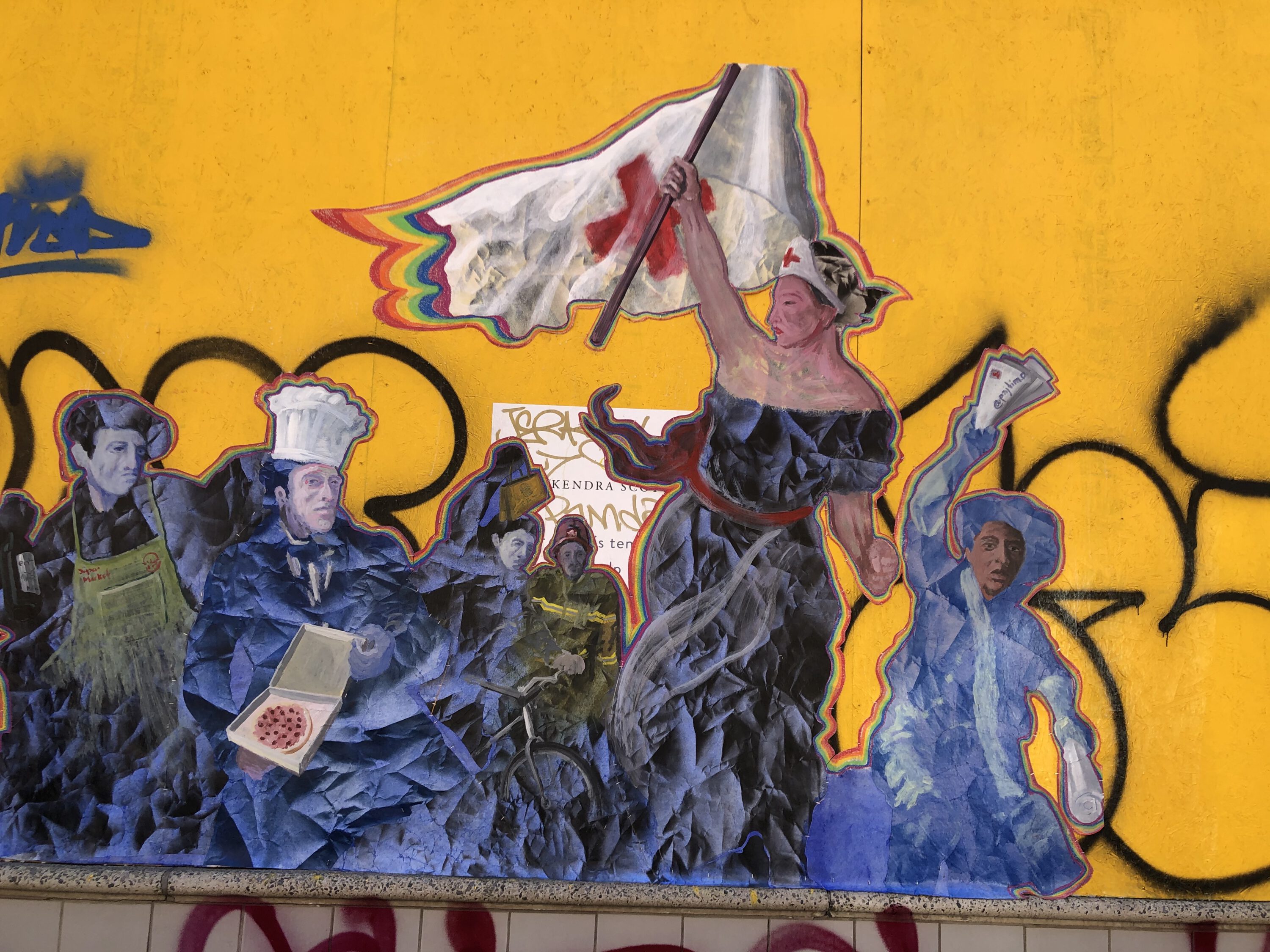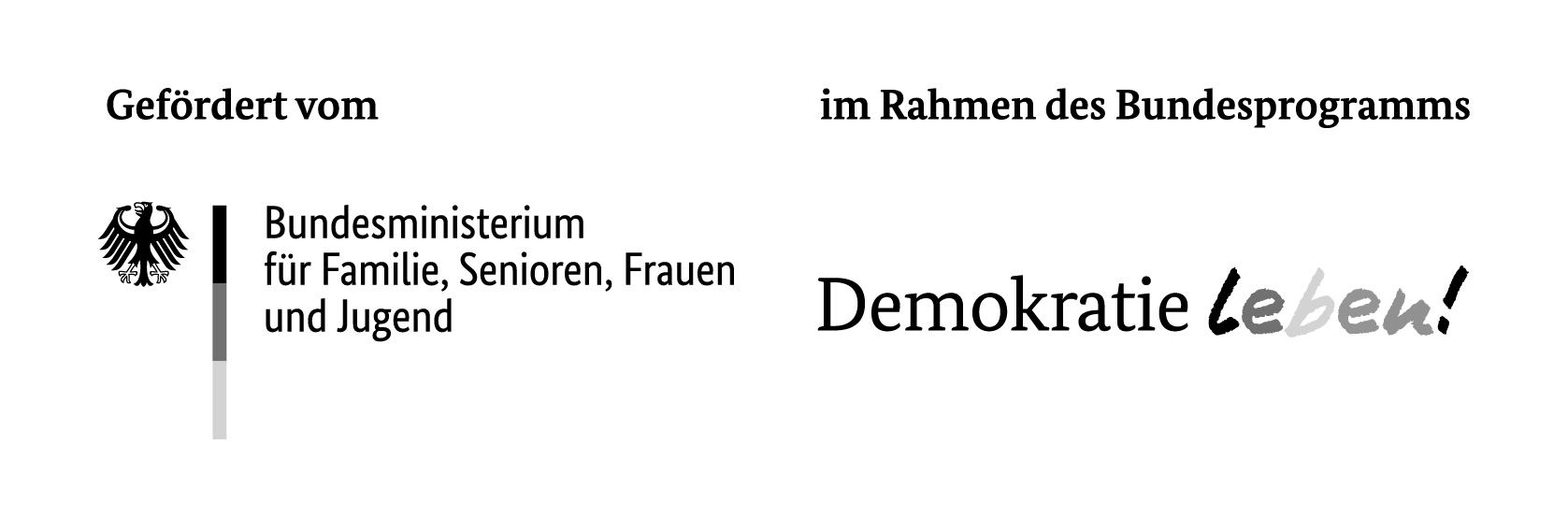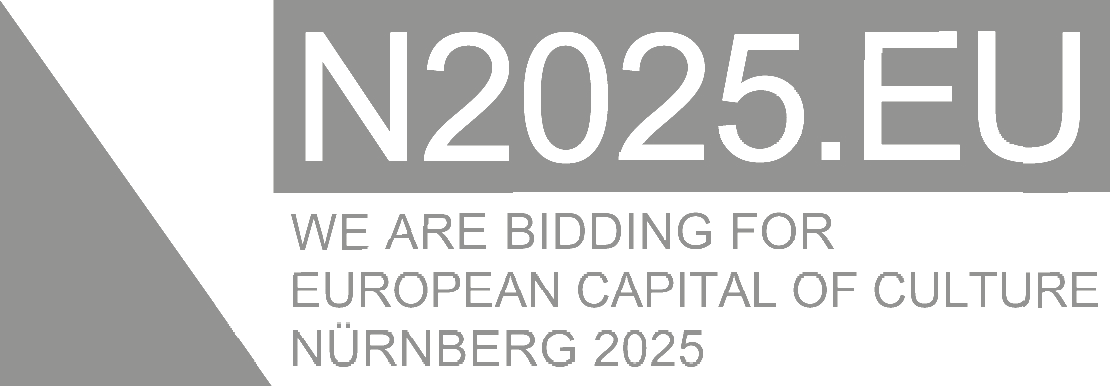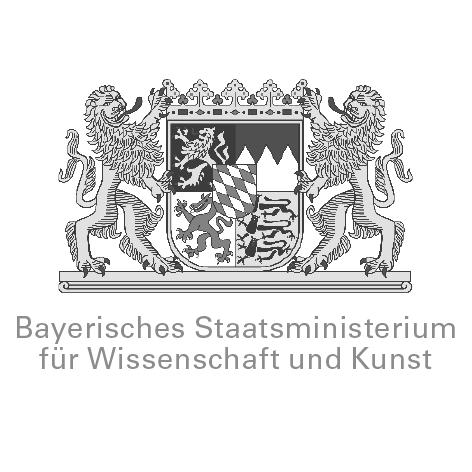Das Gespräch findet in englischer Sprache statt, die Teilnahme ist kostenlos / The conversation will be in English and free of charge. Zoom-Link:
https://us02web.zoom.us/j/83916687675?pwd=OEJHeGFkU3dROVc1RGFQZSt2UUFtdz09

Liberty Leading the People/ Essential Workers / Spring and Green Streets, NYC, June 3, 2020. Photo: Hannah Higgins.
Sonic Images of the Coronavirus
Because representations or experiences of sound routinely shape the way images signify, WJT Mitchell’s theory of pictures is also, implicitly, a theory of sound. Abu Hamdan’s work as a “private ear” and with the effects of simultaneous translation, alongside Mitchell’s interest in the “ear witness” have implications for how we can think about the images of a sonically stilled public sphere during the Corona Virus. As this exhibition demonstrates, we are clearly in an era characterized by “evolving notions around the politics of listening.”
A quick look at the front page of the New York Times from March 2020 is typical of sonic images of the corona virus. Images of absence became common place almost immediately. Pictures were taken of a newly ubiquitous nothing: of no people on city streets, no people in major plazas of the world, no one using public transporation since there was nowhere to go, no people at rallies, no people in classrooms, no one in abandoned markets, no one in desolate businesses, no one on beaches, no one in churches without mourners where closed coffins conveyed the ever-silenced dead into the afterlife. These empty spaces were also quietly reassuring of state-mandated efforts to contain the spread of disease. For the most part these were images of relative silence.
Even as these sonic images of silence bore an alarming resemblance to post-apocalyptic scenes of mass extinction, these hushed public spaces were almost always paired with images or descriptions of noisy places where essential workers were busy saving everyone else: these raucous hives took the form of hospitals, warehouses, essential markets, and factories making respirators and PPEs. Live human noise came to signify contagion, the sounds of humans working and dying together. A choice example of graffiti from SoHo New York in June 2020 makes this point. It shows essential workers marching in protest, in the form of Eugene Delacroix’s Liberty Leading the People. Protests are both crowded and noisy.
Clearly the images of public silence denoted a sign language of publics that had listened to governments, whose response to the epidemic placed us in all manner of plywood, or brick, or gilded cage. But the silence is, particularly in the United States, also a marker of a politics of privilege, since frontline workers (the pizza delivery man, the nurse, the doctor, the mail person, the cook, the factory worker) had no choice but to pass through and beyond the protective shield of silence on their way to and from work.
As the adage goes, eyes have lids that we can use to separate our inner selves from the world, but ears do not. They sit, like floral cones of flesh permanently affixed to the sides of our heads in a permanent state of receptivity. This is why sound, more than pictures of various scenes, links us to each other in our daily lives: not just by way of the proximate voice of a friend or a coworker or a family member, but also through the live sounds of shoes crunching debris beneath our shoes, of cars passing, of trains and buses, of wildlife, and of imminent danger. This is why our omnidirectional human ears so often guide the unidirectional line of sight.
At the level of the sonic image as a diagnostic tool, it stands to reason that the politics of listening to these images would vary a great deal by whether the viewer could isolate or not, was working from home or in the busy hive of a hospital treating patients or a factory making respirators.
No doubt the burden of COVID has been felt most vividly by the poor of all colors, but the changing meaning of the images of silence, means we are bearing witness to seismic shift both in how we see and hear the pandemic, but also in how we see and hear responses to it in the imagery of sound.
Hannah B. Higgins
Silent streets, noisy hospitals and protests in news accounts define the accoustic background of the rise of COVID 19. In their upcoming talk, Hannah B. Higgins and W.J.T.Mitchell will discuss the concept of a “Sonic Image”, the relation between hearing and seeing, and the ever necessary/never successful attempts to capture sound in a visual image.
Hannah B Higgins is a professor and founding director of IDEAS at the University of Illinois at Chicago. Higgins’s books include Fluxus Experience (University of California Press, 2002), The Grid Book (MIT Press, 2009) and the anthology Mainframe Experimentalism: Early Computing and the Foundations of Digital Art (University of California Press, 2012), which she co-edited with media historian, Douglas Kahn. From 2011-2014, Higgins was a University Scholar at UIC. She has also received DAAD, Getty Research Institute, Philips Collection, and Mellon Foundation Fellowships in support of her research. The daughter of Fluxus artists Dick Higgins and Alison Knowles, she is co-executor with intermedia artist, Jessica Higgins, of the Estate of Dick Higgins and his “Something Else Press”.
W. J. T. Mitchell is Professor of English and Art History at the University of Chicago. He is also the editor of Critical Inquiry. His recent publications include Seeing Madness: Insanity, Media, and Visual Culture (2012), Cloning Terror: The War of Images, September 11 to Abu Ghraib (2011), and Seeing Through Race (2012). His newest books are Mental Traveler: A FATHER, A SON, AND A JOURNEY THROUGH SCHIZOPHRENIA. Chicago, IL: University of Chicago Press (2020), and Image Science: Iconology, Media Aesthetics, and Visual Culture, published in 2015. Mitchell has received various awards and his articles have appeared in numerous journals, including Art in America, October and Artforum.





